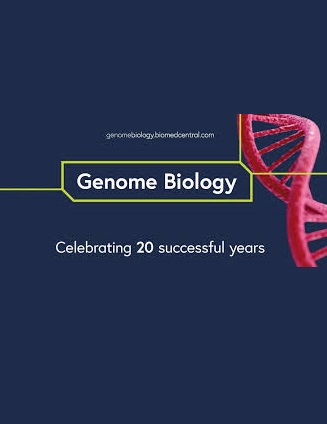Benchmarking computational methods for single-cell chromatin data analysis
IF 10.1
1区 生物学
Q1 BIOTECHNOLOGY & APPLIED MICROBIOLOGY
引用次数: 0
Abstract
Single-cell chromatin accessibility assays, such as scATAC-seq, are increasingly employed in individual and joint multi-omic profiling of single cells. As the accumulation of scATAC-seq and multi-omics datasets continue, challenges in analyzing such sparse, noisy, and high-dimensional data become pressing. Specifically, one challenge relates to optimizing the processing of chromatin-level measurements and efficiently extracting information to discern cellular heterogeneity. This is of critical importance, since the identification of cell types is a fundamental step in current single-cell data analysis practices. We benchmark 8 feature engineering pipelines derived from 5 recent methods to assess their ability to discover and discriminate cell types. By using 10 metrics calculated at the cell embedding, shared nearest neighbor graph, or partition levels, we evaluate the performance of each method at different data processing stages. This comprehensive approach allows us to thoroughly understand the strengths and weaknesses of each method and the influence of parameter selection. Our analysis provides guidelines for choosing analysis methods for different datasets. Overall, feature aggregation, SnapATAC, and SnapATAC2 outperform latent semantic indexing-based methods. For datasets with complex cell-type structures, SnapATAC and SnapATAC2 are preferred. With large datasets, SnapATAC2 and ArchR are most scalable.单细胞染色质数据分析计算方法基准测试
单细胞染色质可及性测定(如 scATAC-seq)越来越多地被用于单细胞的个体和联合多组学分析。随着 scATAC-seq 和多组学数据集的不断积累,分析这类稀疏、高噪声和高维数据的挑战变得越来越紧迫。具体来说,其中一个挑战与优化染色质水平测量的处理和有效提取信息以辨别细胞异质性有关。这一点至关重要,因为细胞类型的识别是当前单细胞数据分析实践的基本步骤。我们对源自 5 种最新方法的 8 个特征工程管道进行了基准测试,以评估它们发现和鉴别细胞类型的能力。通过使用在细胞嵌入、共享近邻图或分区层面计算的 10 个指标,我们评估了每种方法在不同数据处理阶段的性能。这种全面的方法使我们能够彻底了解每种方法的优缺点以及参数选择的影响。我们的分析为不同数据集选择分析方法提供了指导。总体而言,特征聚合、SnapATAC 和 SnapATAC2 优于基于潜在语义索引的方法。对于具有复杂细胞类型结构的数据集,SnapATAC 和 SnapATAC2 更受青睐。对于大型数据集,SnapATAC2 和 ArchR 的可扩展性最好。
本文章由计算机程序翻译,如有差异,请以英文原文为准。
求助全文
约1分钟内获得全文
求助全文
来源期刊

Genome Biology
Biochemistry, Genetics and Molecular Biology-Genetics
CiteScore
21.00
自引率
3.30%
发文量
241
审稿时长
2 months
期刊介绍:
Genome Biology stands as a premier platform for exceptional research across all domains of biology and biomedicine, explored through a genomic and post-genomic lens.
With an impressive impact factor of 12.3 (2022),* the journal secures its position as the 3rd-ranked research journal in the Genetics and Heredity category and the 2nd-ranked research journal in the Biotechnology and Applied Microbiology category by Thomson Reuters. Notably, Genome Biology holds the distinction of being the highest-ranked open-access journal in this category.
Our dedicated team of highly trained in-house Editors collaborates closely with our esteemed Editorial Board of international experts, ensuring the journal remains on the forefront of scientific advances and community standards. Regular engagement with researchers at conferences and institute visits underscores our commitment to staying abreast of the latest developments in the field.
 求助内容:
求助内容: 应助结果提醒方式:
应助结果提醒方式:


